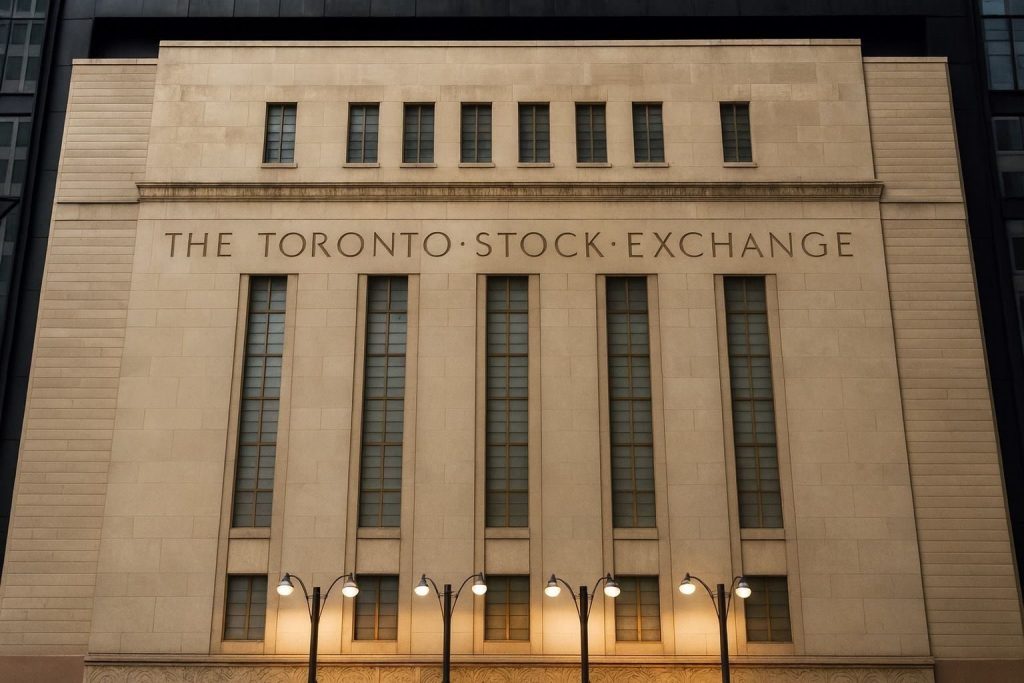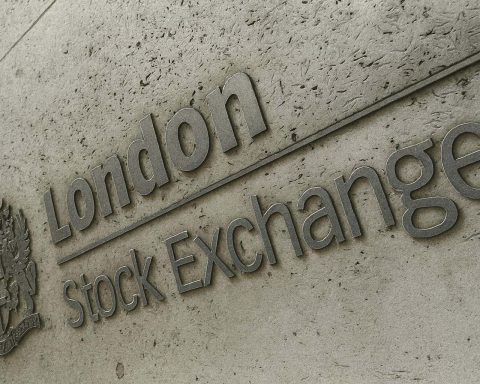London’s stock market started the week with a burst of optimism on Monday 24 November 2025, but early gains faded into the close as investors balanced hopes of a U.S. Federal Reserve rate cut against nerves ahead of Wednesday’s tax‑heavy UK Budget.
The FTSE 100 finished almost unchanged at 9,534.91, down just 0.05%, while the more domestically focused FTSE 250 rose 0.23% to 21,411.58, snapping an eight‑day losing streak that had wiped about 5% off the mid‑cap index since October. [1]
Behind those modest index moves, though, was a busy session: defence stocks sold off on hopes of progress towards peace in Ukraine, gold miners and banks rallied on renewed Fed rate‑cut bets, and UK investors braced for Chancellor Rachel Reeves’s high‑stakes Budget on Wednesday 26 November. [2]
Key takeaways for UK investors
- FTSE 100 essentially flat, FTSE 250 higher: Blue‑chips dipped 0.05%, but mid‑caps gained 0.23%, their first rise after an eight‑session losing streak. [3]
- Rate‑cut hopes vs Budget jitters: Comments from New York Fed president John Williams boosted odds of a December U.S. rate cut, while markets eyed a UK Budget expected to raise taxes by “tens of billions” without touching income tax rates. [4]
- Defence hit, peace hopes rise: BAE Systems led FTSE 100 fallers, with defence names sliding as the U.S. and Ukraine unveiled an updated framework for talks to end the war with Russia. [5]
- Banks, miners and travel stocks climbed: Standard Chartered, Barclays, Fresnillo, Endeavour Mining, Hochschild and easyJet were among the day’s strongest performers. [6]
- Ferrexpo and Vistry stood out in the mid‑caps: Ukraine‑focused miner Ferrexpo jumped around 20%, while housebuilder Vistry benefited from a bullish broker note and a broader recovery in housing stocks. [7]
- Consumer staples and utilities dragged on the index: Diageo, Marks & Spencer, SSE and National Grid all fell, weighing on the FTSE 100 into the close. [8]
Market snapshot after the London open
After the London Stock Exchange opened at 8am GMT, UK equities extended last week’s rebound, with the FTSE 100 registering a third consecutive daily gain by late morning before fading later in the session. [9]
- By midday, Sharecast reported the FTSE 100 up around 0.2% at 9,561.53, helped by a positive global tone following dovish comments from the New York Fed’s John Williams. [10]
- An IG market update at around 10:30am London time highlighted that banks and miners were driving the rally, with UK stocks “rebounding from recent volatility” and investors cautiously rebuilding risk positions. [11]
Through most of the morning, sentiment was underpinned by:
- Fed optimism: Williams suggested U.S. interest rates could move closer to a “neutral” level in the near term, boosting expectations of a December rate cut and supporting risk assets globally. [12]
- Stable sterling: The pound traded in a relatively tight range against major currencies as traders waited for Budget details, with IG noting that sterling had been holding firm ahead of Wednesday’s announcement. [13]
However, afternoon profit‑taking and sector rotation ultimately left the FTSE 100 little changed by the close, even as the FTSE 250 and certain cyclical groups posted solid gains. [14]
Fed rate‑cut hopes meet Budget nerves
Monday’s trade in the UK stock market sat at the intersection of global monetary policy hopes and domestic fiscal anxiety.
Fed tone turns more supportive for risk assets
Following remarks from John Williams on Friday, markets are now pricing a higher probability that the Federal Reserve will cut rates as soon as December, with attention on upcoming U.S. core PCE inflation, GDP and spending data. [15]
Both Sharecast and Reuters noted that his comments, stressing room for policy “adjustment” towards neutral, lifted risk appetite and contributed to gains in banks, miners and other cyclicals in London on Monday. [16]
Countdown to Rachel Reeves’s 2025 Budget
At home, investors are fixated on Chancellor Rachel Reeves’s Budget, scheduled for Wednesday 26 November at around 12:30pm in the House of Commons. [17]
Key points worrying (and potentially reassuring) markets:
- This is Reeves’s second Budget, pitched as a plan to cut NHS waiting lists, bring down the national debt and ease the cost of living, but it comes with another heavy dose of tax rises. [18]
- Briefings suggest she hopes to raise “tens of billions of pounds” without formally increasing income tax rates, relying instead on a mix of threshold freezes and targeted levies (such as changes to property and ISA rules). [19]
- The CBI and market strategists have warned that Reeves needs significantly more fiscal “headroom” than in her previous Budget, and that any mis‑step could trigger a bond market backlash reminiscent of past mini‑Budget turbulence. [20]
For equities, that adds up to a classic push‑and‑pull: lower global rates are positive for valuations, but domestic tax hikes and growth downgrades could weigh on UK‑focused sectors and consumer confidence.
Sector movers: defence stocks sink, gold miners glitter
Defence dragged down by Ukraine peace framework
The most eye‑catching theme on Monday was the sell‑off in defence stocks after news that the U.S. and Ukraine had agreed an “updated and refined peace framework” aimed at ending the war with Russia. [21]
- The aerospace and defence sub‑index fell about 1.7%, according to Reuters. [22]
- BAE Systems was the worst FTSE 100 performer, dropping around 3.6%. [23]
- Babcock International also slid, while broader European defence names were reported at their lowest levels since July. [24]
In the short term, peace hopes reduce expectations of prolonged defence spending booms, which have supported valuations across the sector since 2022.
Gold and precious metals miners shine
On the other side of the ledger, gold miners were among the day’s big winners, boosted by a softer dollar and expectations that Fed easing would support bullion prices. [25]
- The precious metals sub‑index jumped nearly 6%.
- Fresnillo surged about 9%, topping the FTSE 100 risers list. [26]
- Mid‑cap names Endeavour Mining and Hochschild also climbed more than 3–4%. [27]
With real yields expected to fall if the Fed does cut, interest‑sensitive gold names have become a natural hedge for investors who still worry about inflation and geopolitical risk.
Banks, homebuilders and travel stocks lead the rebound
Banks benefit from broker upgrades and rate narrative
UK banks helped cushion the FTSE 100, as investors balanced long‑run margin pressure from eventual rate cuts against decent near‑term earnings prospects.
- The banking index gained around 1%. [28]
- Standard Chartered rose almost 3% after Morgan Stanley upgraded the stock to “overweight”. [29]
- Barclays added just over 2%, with the same broker naming it a top pick in the sector. [30]
The message from Monday’s trade: the market is still selectively positive on UK and European banks, particularly where capital buffers look strong and fee income provides diversification.
Housebuilders and the FTSE 250: recovery after an ugly streak
After eight down days in a row, the FTSE 250 finally bounced, led by housing stocks following a constructive note from Goldman Sachs. [31]
- Vistry climbed about 4%, topping mid‑cap risers, with Goldman arguing the group is well‑placed in affordable housing. [32]
- The broker also highlighted Barratt Redrow and Persimmon as preferred names in the sector, giving the entire homebuilding complex a lift. [33]
For investors, the move shows how sensitive mid‑caps are to changes in sentiment: a single upbeat sector note, combined with improved global risk appetite, was enough to reverse a lengthy losing run.
Travel & leisure: easyJet climbs
Travel and leisure stocks also enjoyed a better day as rate‑cut chatter and a calmer macro tone supported more cyclical exposure.
- The sector rose about 1.7%, with easyJet up roughly 3.6%, putting it near the top of FTSE 100 risers. [34]
These moves highlight a market that is tentatively rotating back into economically sensitive areas, betting that central banks may have done enough to tame inflation without crushing growth.
Corporate stories driving the UK market
Anglo American and BHP: deal off, focus on Teck merger
Mining heavyweight Anglo American stayed broadly flat despite a major M&A headline: Australian rival BHP confirmed it is no longer pursuing a takeover that could have created the world’s largest copper producer. [35]
- Anglo is still working on its $50+ billion merger with Canada’s Teck Resources, a deal BHP’s renewed interest had threatened to complicate. [36]
- BHP reiterated that a tie‑up would have had “strong strategic merits” but said it is confident in its own organic growth strategy, ending the latest round of speculation. [37]
The news removes near‑term bid premium speculation in Anglo’s share price, but keeps investor attention on copperand the longer‑term demand story tied to the energy transition.
Ferrexpo rockets on peace hopes
One of the most dramatic moves of the day came from Ferrexpo, the Ukraine‑based iron ore producer.
- Shares jumped around 20%, as investors bet that a credible peace framework between Russia and Ukraine could eventually allow more normal operations and exports. [38]
Given the company’s long‑running operational disruptions, Monday’s surge underscores how political breakthroughs can quickly re‑price high‑risk names on the London market.
AstraZeneca and IMI: deal and investment news
Two industrial/healthcare names also helped underpin sentiment:
- AstraZeneca ticked higher after unveiling a $2 billion investment to expand manufacturing capacity in Maryland, U.S., underlining its long‑term growth and supply ambitions. [39]
- Engineering group IMI gained modestly as it agreed to sell its Truflo Marine business to Fairbanks Morse Defense for £225 million, sharpening its focus on core operations. [40]
These moves fed into a broader narrative that UK‑listed multinationals remain active on the strategic front, despite political and tax uncertainty.
Trainline derails on rail fare freeze
At the other end of the spectrum, Trainline suffered the sharpest fall on the FTSE 250, sliding more than 6% after the UK government confirmed that rail fares in England will be frozen next year for the first time in three decades. [41]
A prolonged fare freeze raises questions about revenue growth and margin pressures in the ticketing and rail ecosystem, and Monday’s reaction showed investors quickly marking down firms most exposed to regulated pricing.
Advertising and jobs data paint a cooler backdrop
Away from the main indices, Monday’s newsflow also pointed to a slightly cooler UK macro backdrop:
- IG highlighted that M&C Saatchi and S4 Capital have issued profit warnings, suggesting advertising budgets are being trimmed as economic uncertainty persists. [42]
- The same note flagged that job vacancies have fallen below 800,000 for the first time since 2021, with graduate roles particularly hard hit, signalling a cooling labour market that could both ease wage pressures and weigh on consumer spending. [43]
For the Bank of England, weaker employment data support the case for future easing; for equity investors, it complicates the outlook for consumer, retail and services stocks.
Laggards: consumer staples and utilities under pressure
Despite strength in cyclicals, several defensive heavyweights kept the FTSE 100 in check:
- Beverage stocks fell nearly 2%, with Diageo down about 2.2%. [44]
- The personal care, drug and grocery sub‑index slipped roughly 1.2%, and Marks & Spencer lost about 2.6%. [45]
- Utilities gave up around 1.3%, including declines in SSE and National Grid. [46]
Some of this reflects position‑switching: investors took profits in defensives that had outperformed during risk‑off periods and rotated into banks, miners, and travel names more geared to an improved growth and rate outlook.
What Monday’s session means – and what to watch next
For anyone following the UK stock market today, 24 November 2025 delivered a clear message:
- Global central banks still drive the big picture. Fed signals about near‑term rate cuts provided a tailwind for equities, particularly cyclical names and gold miners. [47]
- The Budget is the next major catalyst. With Rachel Reeves set to deliver a tax‑heavy Budget on Wednesday 26 November, UK assets – from gilt yields to bank and housebuilder shares – will be highly sensitive to any surprise on tax, spending and growth forecasts. [48]
- Sector divergences are widening. Defence stocks are now reacting more to geopolitics than to budget speculation; gold miners are trading off rate expectations; domestic cyclicals are being pulled between improved global sentiment and fears of higher UK taxes. [49]
For investors and traders, the rest of the week is likely to bring:
- High volatility around the Budget speech and subsequent market reaction, especially in UK‑focused sectors (banks, housebuilders, utilities, retailers).
- Further repricing in defence and commodity names depending on how Ukraine peace efforts and commodity prices evolve.
- Close scrutiny of new macro data that could either confirm or challenge the Fed‑cut narrative currently boosting risk assets.
As always, this article is for information only and not personal investment advice. Anyone considering trading or investing should do their own research or seek professional guidance, and remember that the value of investments can go down as well as up.
References
1. www.lse.co.uk, 2. www.fidelity.co.uk, 3. www.lse.co.uk, 4. www.fidelity.co.uk, 5. www.fidelity.co.uk, 6. www.lse.co.uk, 7. www.fidelity.co.uk, 8. www.lse.co.uk, 9. www.ig.com, 10. www.fidelity.co.uk, 11. www.ig.com, 12. www.fidelity.co.uk, 13. www.ig.com, 14. www.lse.co.uk, 15. www.fidelity.co.uk, 16. www.fidelity.co.uk, 17. www.parliament.uk, 18. commonslibrary.parliament.uk, 19. www.fidelity.co.uk, 20. www.reuters.com, 21. www.fidelity.co.uk, 22. www.reuters.com, 23. www.lse.co.uk, 24. www.theguardian.com, 25. www.fidelity.co.uk, 26. www.lse.co.uk, 27. www.lse.co.uk, 28. www.reuters.com, 29. www.reuters.com, 30. www.lse.co.uk, 31. www.reuters.com, 32. www.lse.co.uk, 33. www.fidelity.co.uk, 34. www.lse.co.uk, 35. www.fidelity.co.uk, 36. www.theguardian.com, 37. www.theguardian.com, 38. www.fidelity.co.uk, 39. www.fidelity.co.uk, 40. www.fidelity.co.uk, 41. www.lse.co.uk, 42. www.ig.com, 43. www.ig.com, 44. www.reuters.com, 45. www.reuters.com, 46. www.reuters.com, 47. www.fidelity.co.uk, 48. www.parliament.uk, 49. www.reuters.com










